What are Self Connecting Steps?
- Getting Started
- Bot Building
- Smart Agent Chat
- Conversation Design
-
Developer Guides
Code Step Integration Static Step Integration Shopify Integration SETU Integration Exotel Integration CIBIL integration Freshdesk KMS Integration PayU Integration Zendesk Guide Integration Twilio Integration Razorpay Integration LeadSquared Integration USU(Unymira) Integration Helo(VivaConnect) Integration Salesforce KMS Integration Stripe Integration PayPal Integration CleverTap Integration Fynd Integration HubSpot Integration Magento Integration WooCommerce Integration Microsoft Dynamics 365 Integration
- Deployment
- External Agent Tool Setup
- Analytics & Reporting
- Notifications
- Commerce Plus
- Troubleshooting Guides
- Release Notes
Self-connecting steps are used for maintaining the conversation state at the same step by entering user messages and for entity-based step identification for start steps.
- Conversation state maintains the same step by default when new entities for that step are detected in the most recent user messages and they are not used for transitioning to other steps. However bot will break in the above scenarios if there is no change in entities unless sentences such as ‘Show me more options, I need other alternatives, I did not like this item. Is there any better product?’ are present in connection responses while connecting step to itself.
For example: When you need the pagination to display a carousel of nearby ATMs and based on the entity value ‘Show me more’ transition, the same step is triggered to show the next set of ATMs. - Entity-based step detection for start steps is done by creating a Start Step with a self-connection and an Entity Presence/Value-Based transition. If you start a new conversation with a message that contains the specific entity you used for transition, then the step will be detected.
For example: When a user wants to book a vacation in a city to do an activity. ‘Vacation Booking step’ should be able to understand the user's goal to book a vacation and collect the city and activity entities.-
User message - User message section should contain different patterns of user utterances. Consider ‘Vacation Booking’ step-
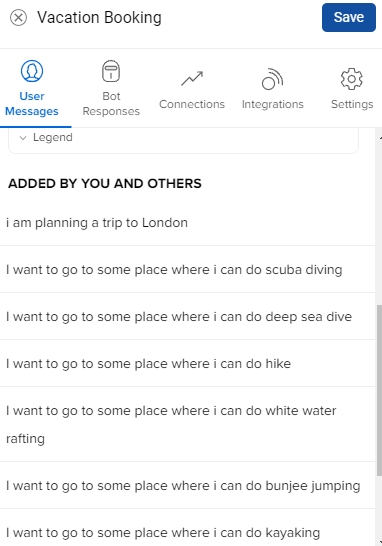
-
Bot response - Add a message to confirm that the bot understood user’s goal and ask user to provide the city information.
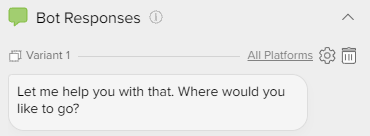
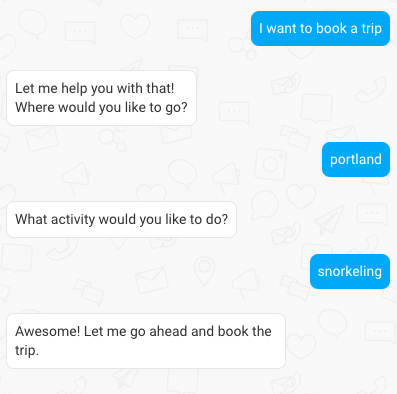
-
Entity - Create mandatory entities city and activity. Add the default message for both these entities.
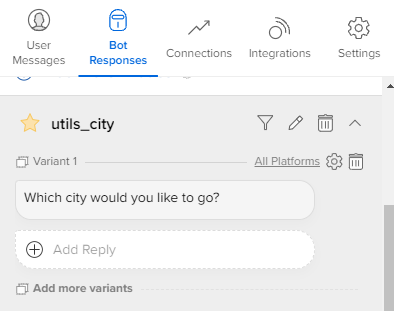
-
Final Response - Perform validation via integrations and send out a message based on the validation result.
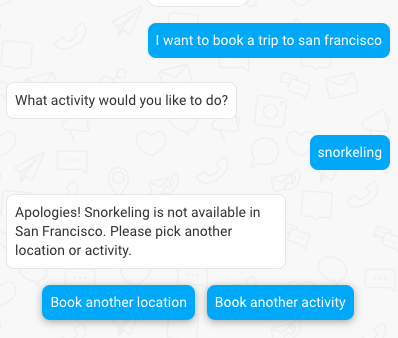
-
User message - User message section should contain different patterns of user utterances. Consider ‘Vacation Booking’ step-
